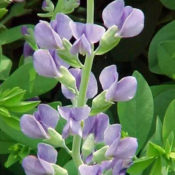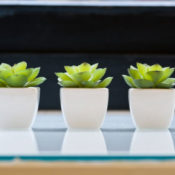Brightening your home with beautiful bouquets is one of the perks of flower gardening, and there are techniques for cutting and preserving flowers so they stay fresh and beautiful for as long as possible. But these techniques can vary from flower to flower, depending on the type of plant. Roses, for example, like other flowers, are best cut in early morning or evening or on cool, cloudy days to minimize moisture loss. Remove leaves that will be below the water line. Cut the stems off diagonally to enlarge the absorption surface, and do this while the stems are immersed in water so they won’t be obstructed by air bubbles. Treat asters and snapdragons in the same manner.
Cut roses, daffodils, gladiolas, and irises when the flowers are in bud. They will open in the vase. Other flowers such as marigolds, delphiniums, and dianthus should be cut after opening. After cutting the stems with a sharp, nonserrated knife, immerse the stems in a pail of lukewarm (never cold) water and place in a cool spot out of the sunlight for a few hours. This will increase longevity.
Flowers with hollow stems, such as daffodils, delphiniums, and amaryllis, will live longer if you turn them over after cutting, fill the stems with water, then place a plug of cotton in the base and submerge the stems immediately in the vase.
Before putting daffodils, hollyhocks, hydrangeas, or poppies in a vase, singe the ends briefly with a lighted match. This will keep the milky substance in their stems from coagulating and blocking their water supply. It will also prevent the milky substance from entering the water and adversely affecting other flowers.
To prepare clematis flowers, pour boiling water on the stems and then place them in cold water. Additionally, like some people, these flowers prefer a little nip to stay happy. The Japanese dip them in an alcoholic beverage, such as champagne, for a few hours before putting them in a vase. We don’t know if they drink the champagne afterwards, but we don’t recommend it.
For bouquets with gladioli, cut the flower when the lowermost floret is opening, and remove a few buds from the top.
Other Bloom-Extending Techniques
Use products such as Floralife, a powder that is added to the water. Or make your own by putting flowers into a solution of one gallon of water with one can of clear soft drink added. Or by adding two teaspoons of a medicinal mouthwash. Others suggest adding an aspirin, a sugar cube, or some bacteria-killing laundry bleach.
To resuscitate wilted flowers, cut a couple inches off the stems and place in a few inches of warm water for a half hour; then put back into the vase with fresh, cool water. In a hot room, place some ice cubes in the water. Or place the flowers in a cooler room for a few hours.
And for that final touch to keep your bouquet looking spiffy, why not cheat a bit? Spray cut flowers lightly with an aerosol hair spray to prevent blossoms from falling. Let us know if this works!
Become a Saturday Evening Post member and enjoy unlimited access. Subscribe now



